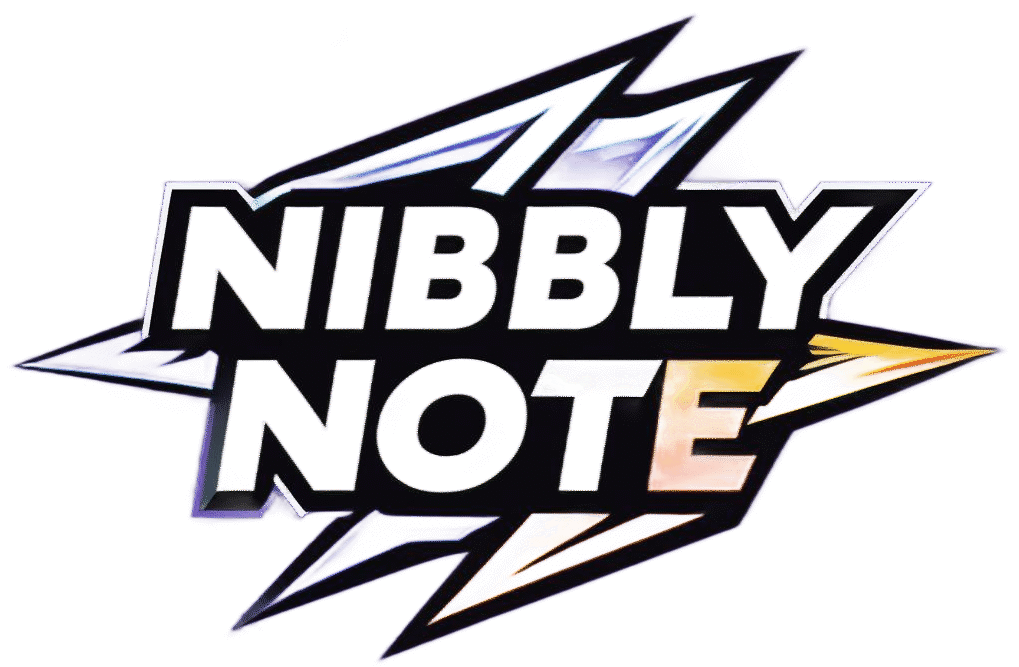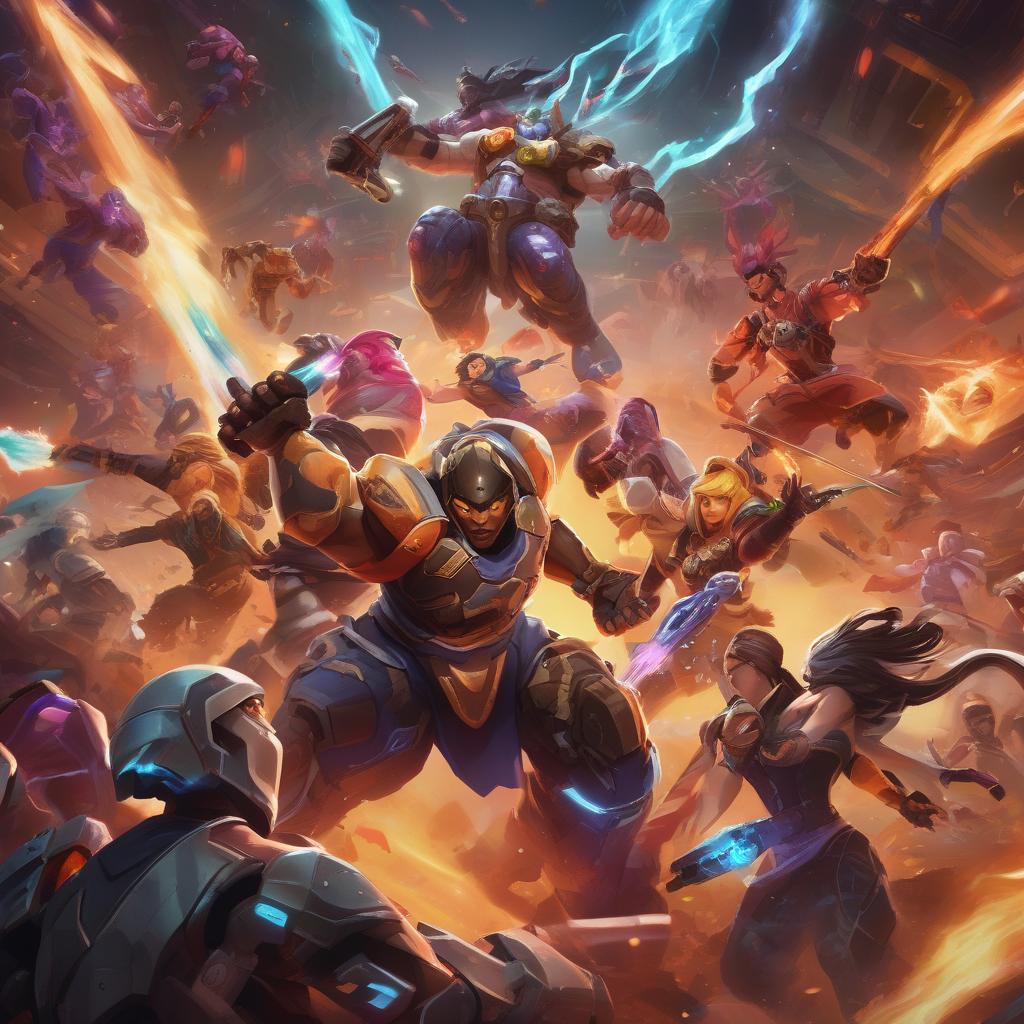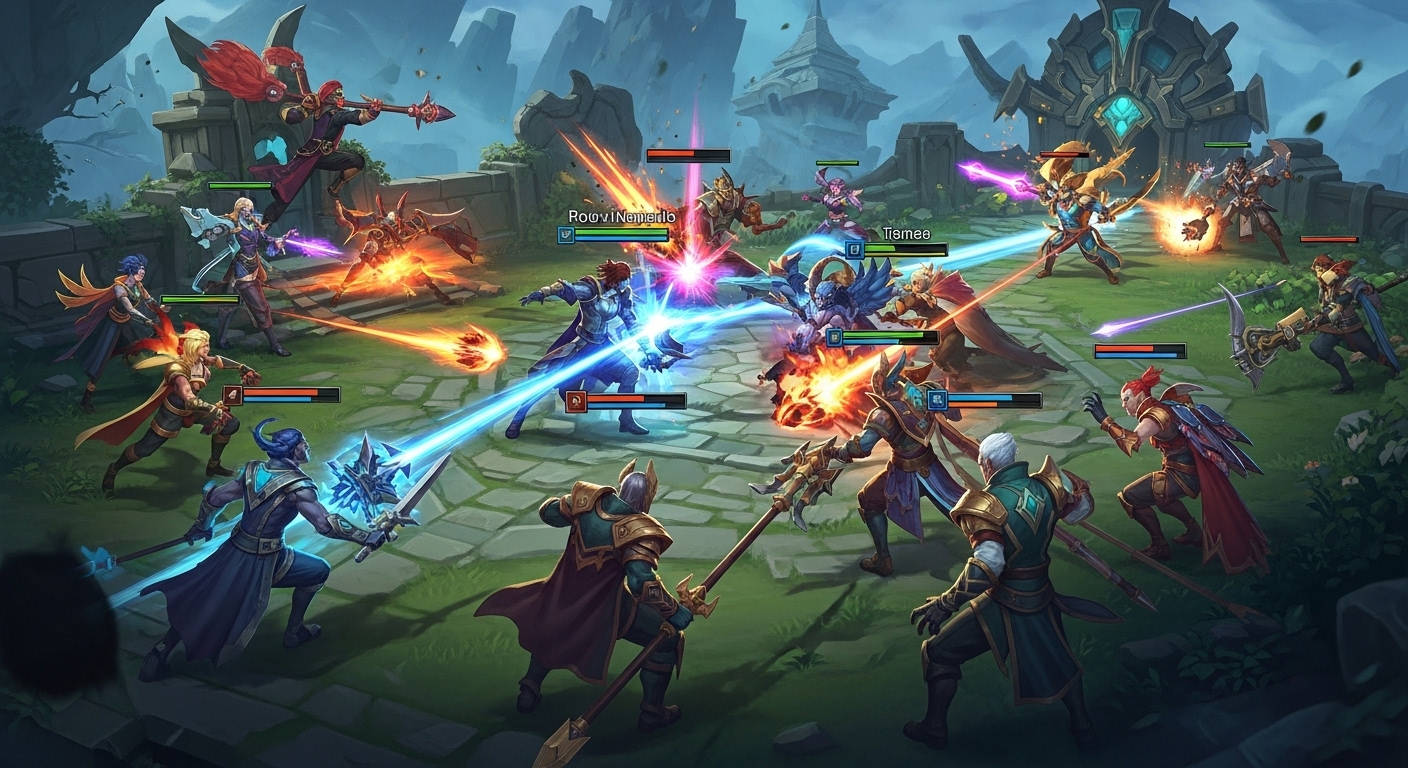So, you’ve stumbled upon the world of MOBA—Multiplayer Online Battle Arena—games, huh? It’s a mad, frantic, and often exhilarating place. I mean, if you’ve ever played one, you know what I’m talking about. Those nail-biting moments as your team fights tooth and nail for that glorious win, the strategies, the teamwork… or sometimes the lack thereof. Yeah, it’s chaotic but in the best possible way. Often, players get drawn into these virtual battlegrounds because there’s really nothing else quite like the adrenaline rush that MOBA games offer.
What Exactly is a MOBA?
Before diving deeper, let’s just clarify what we’re dealing with here. A MOBA is a genre of strategy video games where two teams, usually consisting of three to six players each, face off in a competitive battlefield. Each player controls a single character, known as a “hero” or “champion,” with unique abilities and play styles. The main objective? Destroy the opposing team’s base or “nexus.” Simple premise, complex execution.
The genre has evolved over the years, with roots tracing back to early custom maps in Warcraft III. Interestingly, it’s grown into something much bigger than anyone initially expected. These games have become a huge part of gaming culture, not just for the avid gamers but for spectators as well. If you’re interested in how MOBA games have shaped gaming culture, you might want to check out this Forbes article.
The Mechanics That Keep Us Hooked
So why are MOBA games so engaging? It’s the mechanics, man. The core gameplay mechanics are designed for depth and replayability. These games are easy to learn but extremely hard to master. Each match is a new puzzle to solve, with variables changing based on your team composition, the enemy’s strategy, and even your individual performance.
- Heroes and Abilities: The core of any MOBA. Choosing the right hero for your play style and adapting your strategy can make or break the game.
- Maps and Objectives: Each map has its lanes, jungle, and objectives like towers and inhibitors. Understanding the layout is crucial for success.
- Team Coordination: It’s not a solo adventure. You need to communicate, plan, and execute strategies as a team.
The Big Names in the MOBA Arena
Alright, let’s talk about the big guns. Titles like “League of Legends,” “Dota 2,” and “Smite” probably pop into your head right away. They dominate the MOBA landscape with League of Legends being the kingpin, thanks to its colorful graphics and countless playable champions. “Dota 2” on the other hand, offers a more hardcore experience with intricate game mechanics that challenge even veteran players. And don’t forget “Smite,” which introduces a third-person perspective, offering a fresh take on the genre.
Each of these games has its own dedicated fan base and unique quirks. But they share common threads like hero selection, team dynamics, and in-game economies. Whether you’re into the fast-paced action of “League of Legends” or the strategic depth of “Dota 2,” there’s something in the MOBA world for everyone.
Comparing Popular MOBA Games
| Game | Release Year | Main Features |
|---|---|---|
| League of Legends | 2009 | Fast-paced, colorful graphics, rich lore |
| Dota 2 | 2013 | Complex mechanics, steep learning curve |
| Smite | 2014 | Third-person perspective, mythological themes |
The Community Aspect
The community around MOBA games is huge. It’s not just about playing the game anymore; it’s about being part of something bigger. You have forums, subreddits, YouTube channels, and Twitch streams dedicated to these games. Esports? Yeah, MOBAs are big there too. Competitions for games like “Dota 2” offer prize pools in the millions. Can you imagine? Playing video games and potentially earning big bucks. It’s a dream for some, a reality for others.
Esports and MOBA
Esports has taken the MOBA scene to another level. Watching professional teams compete at the highest level is a spectacle. The strategies, the teamwork, the clutch plays—it’s like watching a live chess match on steroids. It’s fascinating to see how these games have transcended mere entertainment and become a full-blown competitive sport. For more insights into the MOBA category and its impact, check out this comprehensive guide on NibblyNote.
Challenges and Criticisms
Now, let’s be real. Nothing is without its flaws, right? The world of MOBA games isn’t all rainbows and unicorns. While these games are addictive, they can also be incredibly frustrating. Toxicity in the community, long match times, and steep learning curves are common criticisms. The barrier to entry can be a real turn-off for new players.
Plus, staying competitive requires a significant time investment. Balancing patches can shake up the meta, forcing players to constantly adapt. Not to mention the technical hitches that can occur, like connectivity issues or game bugs. It’s a lot to handle, and not everyone is up for the challenge.
Toxicity in the Community
Let’s touch briefly on toxicity. It’s prevalent in any online game, but MOBAs seem to have a particularly bad reputation. Maybe it’s the high-pressure environment or the complexity of team dynamics, but tempers can flare. Developers are working on it, with systems to report and penalize bad behavior. But it’s an ongoing battle.
Future of MOBA Games
Where do MOBA games go from here? It’s hard to say, but the future seems promising. With advances in technology, we might see more immersive experiences, maybe even integration with VR. Plus, as mobile gaming continues to grow, mobile MOBAs are becoming a thing too. Games like “Arena of Valor” and “Mobile Legends” are already making waves.
There’s also the potential for new genres to sprout from the MOBA framework, much like how battle royale games took off from the traditional shooter. It’s an exciting time to be a gamer, especially if you’re into strategy and team-based gameplay.
Alright, I guess we’ve covered quite a bit, huh? From the basics of what makes a MOBA game to the challenges and the future, it’s a lot to digest. But if you’re curious about diving deeper into this genre, just keep exploring. Try a few games, join a community, maybe even jump into some forums. It’s a vast world out there, and there’s always something new to learn. Who knows? You might find yourself knee-deep in a MOBA match before you know it.
FAQs
- Q: What defines a MOBA game?
A: It’s all about teamwork, strategy, and real-time action. Think of it as a mix between chess and a sports game. - Q: Why are MOBA games so addictive?
A: Well, it’s the competitive nature, the quick decision-making, and the satisfaction of climbing the ranks. Plus, every game feels so different. - Q: Are MOBAs beginner-friendly?
A: Not gonna lie, the learning curve can be steep. But hey, everyone starts somewhere, right? Plenty of tutorials and guides online to help you out. - Q: Is the MOBA community really that toxic?
A: There’s some truth to it, but it’s not all bad. Many communities are welcoming and helpful. Just gotta find the right group. - Q: Can MOBA games be played solo?
A: Technically, yes. But it’s a team game at heart. Playing solo might limit your experience, but it can still be fun.


